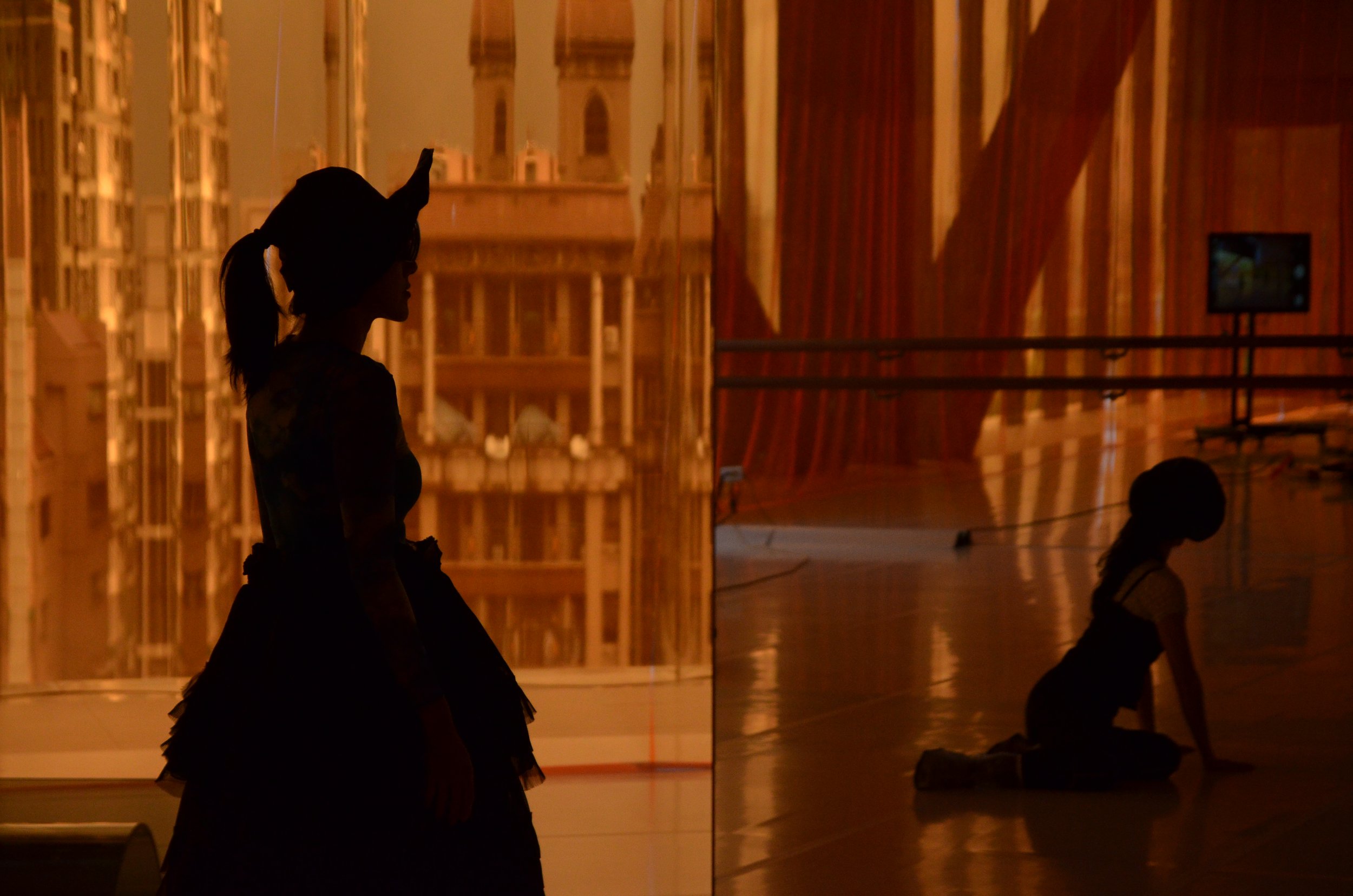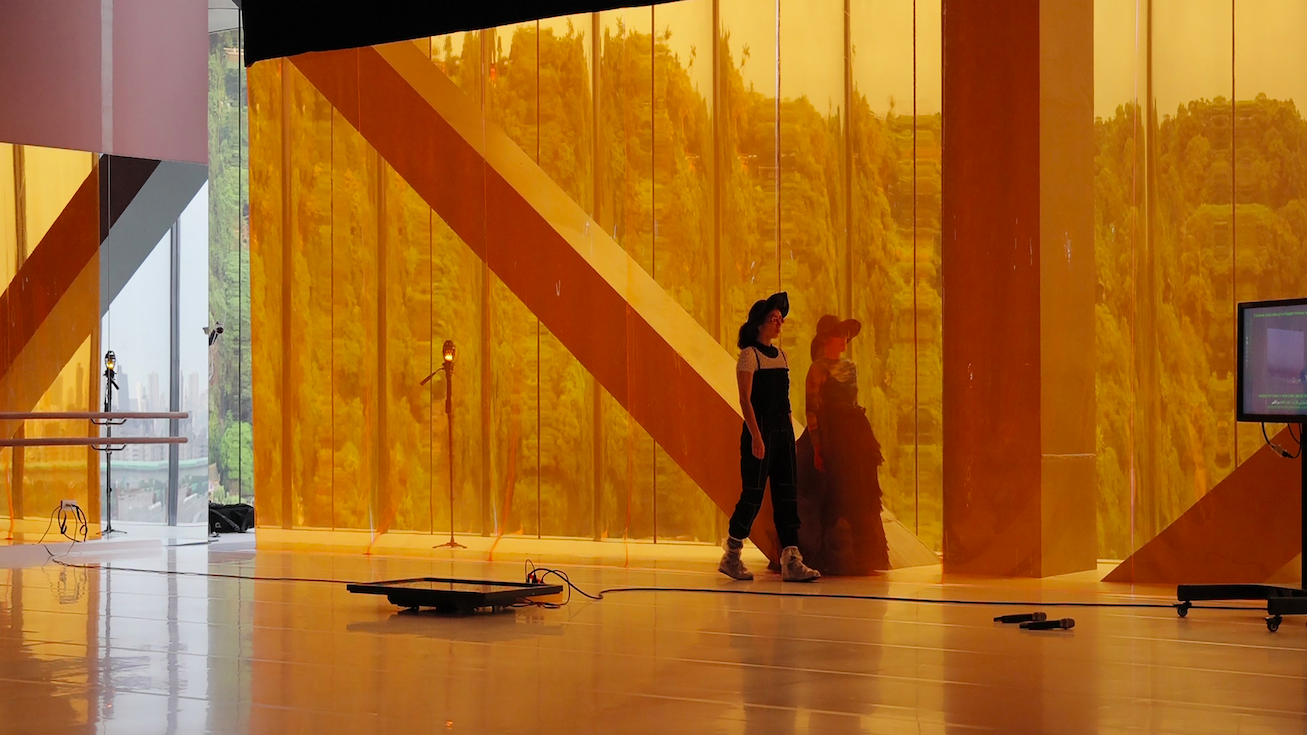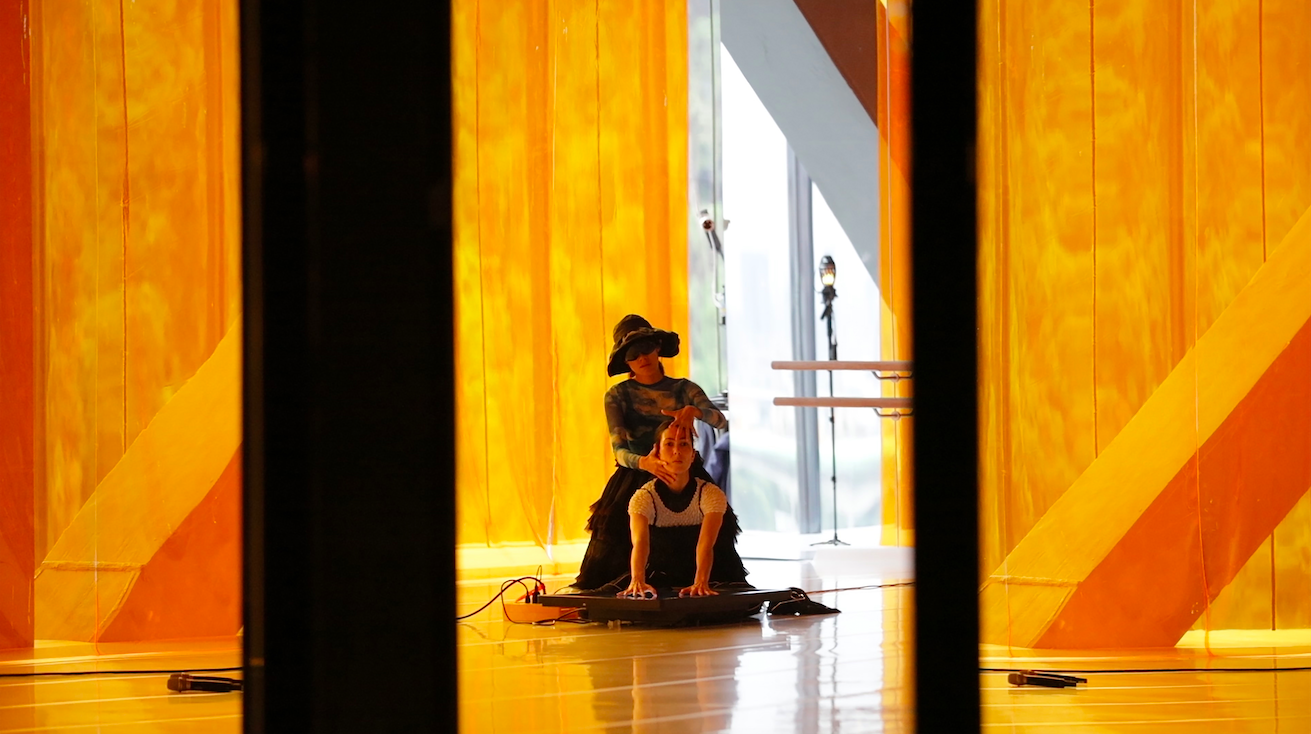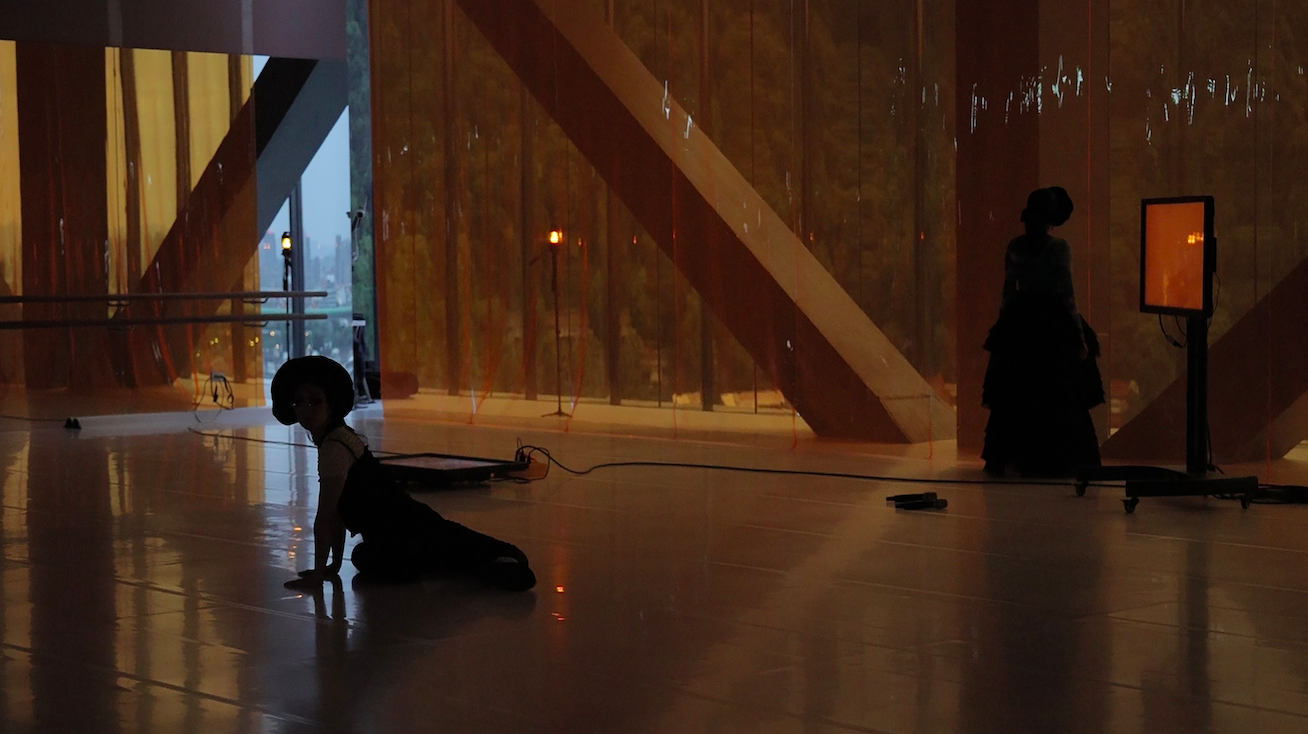An intimate togetherness: Angela Goh and Su Yu Hsin’s ‘Paeonia Drive’
/Early this month, the eleventh-floor rehearsal room at the newly opened Taipei Performing Arts Centre was adorned with a fixed sunset. A neon-orange vinyl curtain hung in the pink dance studio, in front of undulating windows reaching from floor to ceiling – obscuring an already obscured view, and basking the space in a generous warm light. This was the backdrop for Paeonia Drive, a newly staged performance by Angela Goh and Su Yu Hsin, showcasing their four-year-long, ongoing collaborative research project.
In this 2022 iteration, the 60-minute performance was framed by an installation of objects and devices that sought to reflect, simulate, broadcast, fracture and even manipulate: movable partition panels were transformed into mirrors, diagonally lined along the right wall; cameras were set up in all corners and a monitor streamed their views; two screens played a video of the artists’ 3D-scanned self-portraits, and an iPhone camera was synced to another TV to cast its observations. These set-ups fragmented the space while expanding it all at once, creating an uncanny closed-circuit environment of multitudes with inescapable reflections – all who arrived at Paeonia Drive belonged to it, becoming part of the work.
‘The relationship between seeing and being seen, of object and subject, changes [in the performance],’ says Su, a Taiwanese Berlin-based artist and filmmaker. ‘The presence of cameras shifts [these] conditions,’ she adds, suggesting the piece’s panopticon-like experience.
Goh and Su moved vigilantly with the props, using them in their elegantly captivating choreography to constantly alter the spatial arrangement as they navigated a surrounding mobile audience. Without any seating or a defined stage, the mobility of viewers created an unpredictable dynamic that required both participant and performer to continually adjust their positions to one another.
Goh, an Australian Warrang/Sydney-based dancer and choreographer explains: ‘People have time to situate themselves [within] the space, and [their movements] are activated throughout the performance … They exist inside the work by interaction and by their own exploration of [their] image.’
Surveillance and digital anxiety are topics that Paeonia Drive speculates on, revealed through the metaphor of a garden that is also hinted at by its title: while the role of the gardener entails care and maintenance, the act of gardening involves patterning, containing and control. The artists, both donned in large hats and sunglasses, spoke to this during a scene where they read the subtitles of a slightly sinister computer-animated video piece, proclaiming a ‘gardener’s vision of war’ and the ‘slippery nature of abstraction’.
However, despite the ominous narration and theme – or because of the imposed frameworks in the physical space – the tender moments when Goh and Su touched and moved in unison, witnessed and made room for by the audience, revealed an intimate togetherness. In the context of a rehearsal studio, the performance was ultimately about that, as Goh reflects: ‘Providing a space to question how we behave is also to rehearse [the] possibilities and processes of being together.’
Annette An-Jen Liu, Taipei
Research for Paeonia Drive began in 2018, as part of Asia Discovers Asia Meeting for Contemporary Performance (ADAM), an initiative curated by River Lin and launched by the Taipei Performing Arts Centre (TPAC). The project is co-produced by Arts House (Naarm/Melbourne) and Campbelltown Arts Centre (Warrang/Sydney), premiering as part of ‘BLEED 2022’, a biennial event organised by the two Australian organisations along with TPAC and the Museum of Contemporary Art, Taipei. Launched in late August this year, ‘BLEED 2022’ continues across the three cities until 25 September, with online and in-person programs.






















